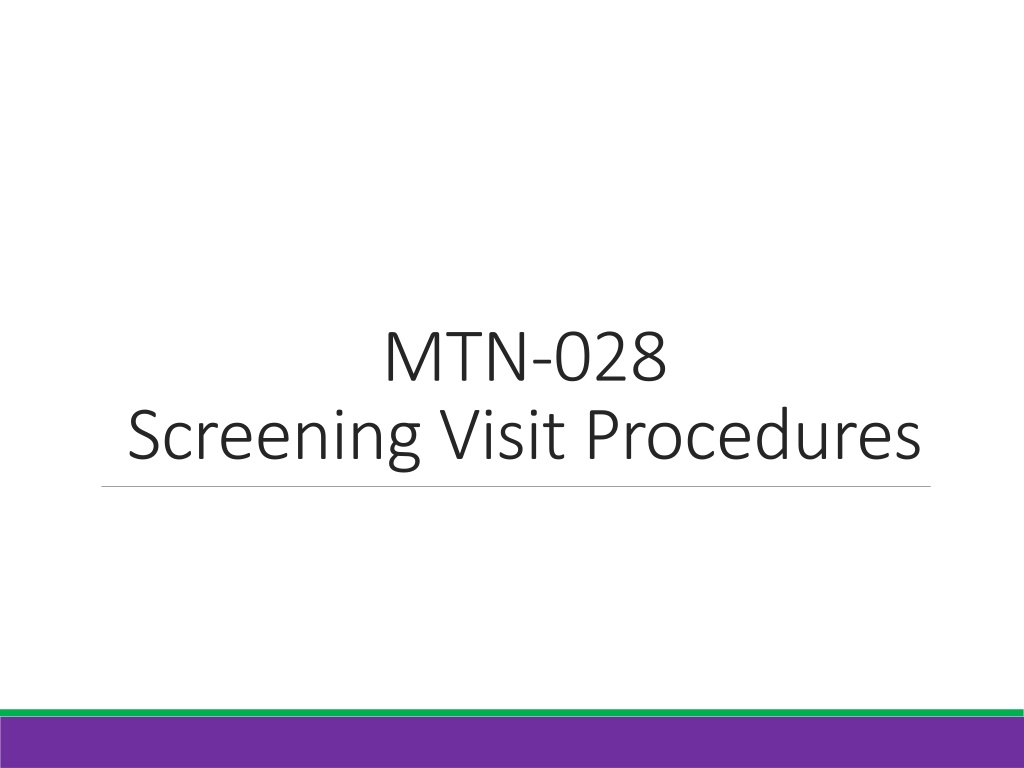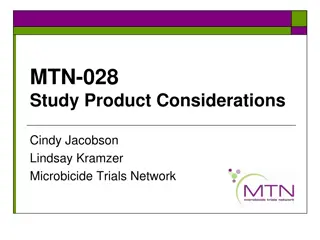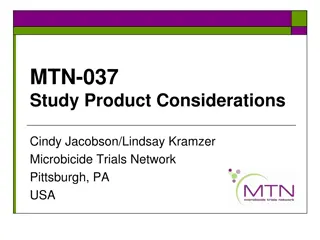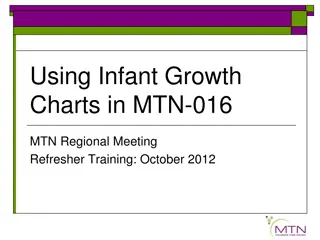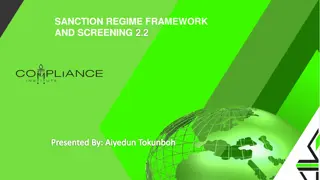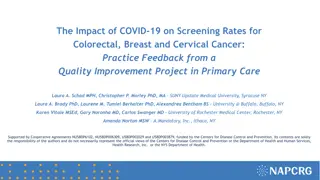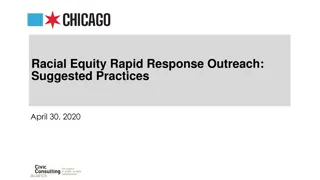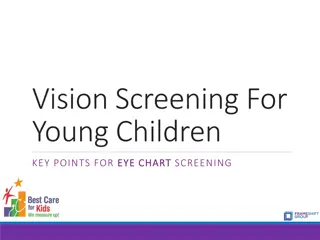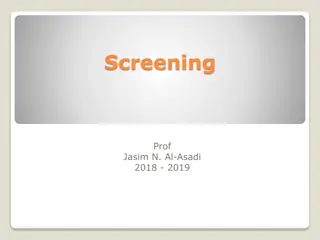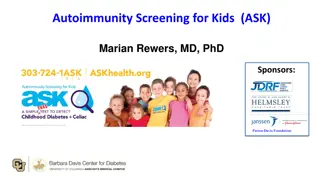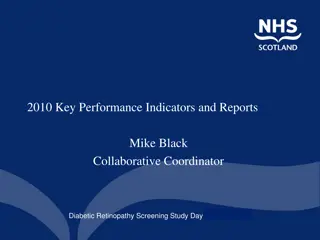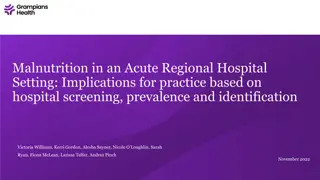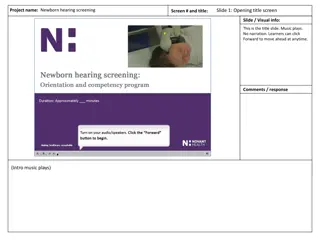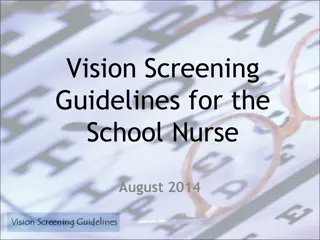Screening Visit Procedures for MTN-028 Study
The MTN-028 study involves comprehensive screening visit procedures, including administrative, counseling, clinical, and laboratory considerations. Elements such as physical exams, HIV testing, pelvic exams, laboratory tests, and informed consent are detailed. Tools for informed consent, long-term specimen storage, and comprehension assessment are crucial parts of the process. The protocol covers various aspects such as protocol adherence, demographic information, eligibility assessment, reimbursement, and scheduling for the next visit. Additionally, the study includes urine, blood, genital, and other tests for comprehensive screening.
Download Presentation

Please find below an Image/Link to download the presentation.
The content on the website is provided AS IS for your information and personal use only. It may not be sold, licensed, or shared on other websites without obtaining consent from the author. Download presentation by click this link. If you encounter any issues during the download, it is possible that the publisher has removed the file from their server.
E N D
Presentation Transcript
MTN-028 Screening Visit Procedures
SSP Manual References Protocol Section 7.2 and Table 10 (Screening) Section 4: Study Procedures Section 5: Informed Consent Section 9: Laboratory Considerations Section 10: Counseling Considerations
Screening Visit Components Administrative Counseling Clinical IC Administration HIV Pre-and Post Test Physical Exam Comprehension Assessment HIV Risk Reduction Pelvic Exam Medical/Menstrual History Review Medication History Review Referrals or Rx for UTIs/RTIs/STIs* Provision of Available Results PTID Assignment Contraceptive Locator Information Protocol Adherence Demographic Information Eligibility Assessment Reimbursement Provision Next Visit Scheduling* * If indicated
Screening Visit Components (Contd) Urine Blood Genital CBC with differentials/platelets hCG (pregnancy) Rapid Trichomonas Test Dipstick UA HIV-1 Serology NAAT for GC/CT Urine Culture* Hepatitis B Surface Antigen Vaginal pH* KOH Wet Mount for Candidiasis* Hepatitis C Antibody Syphilis Serology Saline Wet Mount for BV* Chemistries (ALT/AST/Creatinine) Pap Test* Coagulation (INR) * If clinically indicated
Informed Consent Form Required Optional Screening Long-Term Specimen Storage Enrollment
Informed Consent Informed Consent Coversheet Coversheet Captures all required elements of IC documentation Use of a coversheet strongly recommended
Comprehension Comprehension Assessment Assessment Administered after IC discussion but before the participant signs the ICF Assists staff in assessing participant comprehension and ensures participant understanding prior to providing consent for study participation
Visual Aids Visual Aids Sample Vaginal Ring Information Booklet Calendar with study visit schedule Urine specimen cup Blood collection tubes IVR Insertion Instructions Other randomization explanation visual aids (e.g., sack or box containing four items of different colors)
Eligibility Determination All eligibility criteria are initially assessed at Screening. All eligibility criteria are confirmed on the day of Enrollment. It is the responsibility of the site Investigator of Record (IoR) and other designated staff to ensure that only participants who meet the study eligibility criteria are enrolled in the study.
Screening Behavioral Eligibility Worksheet Recommended source document for assessing eligibility criteria which are based on self-report
Eligibility Checklist Documents participant eligibility for all inclusion/exclusion criteria To be completed at Screening and at Enrollment by designated staff Initial and date next to each item you completed Recommended source document for each item is listed in italics for ease of reference
Contraceptive Counseling Worksheet Assess eligibility criteria related to pregnancy intentions and willingness to use an effective contraceptive method Focus on explaining which methods are acceptable for study purposes and emphasize that women who cannot commit to use of these methods for the duration of the study should not enroll
HIV Pre/Post Test and Risk Reduction Counseling Worksheet Overview of the minimum requirements for HIV testing and counseling sessions Assess participant knowledge of relevant information, dispel any misconceptions, ensure participant readiness for HIV testing, ensure participant understanding of test results Guides the participant in identifying risk factors, barriers to risk reduction and developing strategies and action plans to reduce/eliminate risk
Protocol Adherence Counseling Reference the Prohibited Activities and Products section of the MTN- 028 Important Study Information Booklet available on the MTN-028 webpage (http://www.mtnstopshiv.org/node/6560) Review the list of prohibited medications, products and practices participants should refrain from engaging in or using during study participation Document provision of counseling in chart notes and/or visit checklist
Screening Visit Checklist Serves to guide proper study procedures as well as to serve as source documentation of procedures performed at study visits
Screening Window Screening Enrollment 45 Days If needed, screening visit procedures can be completed over multiple visits. One rescreen allowed per IoR discretion
Screening Window For example, if a participant signs the informed consent on July 1st, the last day for enrollment is August 15th. Since enrollment is considered Day 0, you count backward -45. To make things easier, Last Day to Enroll Calculator was created so sites can enter the screening date and the calculator will provide the last day of enrollment.
Required Documentation for Screen Failures Completed ICF Reason(s) for ineligibility, with date of determination, as per the completed Eligibility Checklist Necessary referrals on file (as appropriate) and documentation that any clinically significant abnormalities (labs, etc.) were communicated to the participant (even if referral is not necessary) All source documentation complete up until the time that ineligibility was determined Chart notes complete up until the time ineligibility was determined Indication of what visit procedures were conducted (on visit checklists) Completed Eligibility Criteria CRF, updated with screen failure reason(s) and faxed to DF/Net Completed Screening and Enrollment Log with reason for discontinuation
Approach to CRF Training Focus on purpose/reason for key CRFs Will try to address questions received during external review of CRFs Will not go item by item, but will focus on key fields Will not review form instructions, but will refer to these as needed Please ask questions!
Screening CRFs Demographics CRF Eligibility Criteria CRF Pre-existing Conditions CRF Concomitant Medications Log CRF Physical Exam Pelvic Exam CRF (+ pelvic exam diagrams form) Safety Laboratory Results CRF
Demographics (DEM-1) Completed once for each participant at Screening Visit Interviewer-administered Collects required participant descriptors Age Race Ethnicity Collects descriptors requested for publications/reports Gender Highest level education Income Items reflect participant status at Screening only not updated later unless correction is needed
Pre-existing Conditions Log (PRE) Will include participant-reported conditions as well as abnormalities captured on: Pelvic Exam Diagrams, Pelvic Exam CRFs, (from screening and enrollment) Physical Exam CRFs (from screening and enrollment) Grade 1 and higher laboratory results on Safety Laboratory Results CRF
Pre-existing Conditions log cont Page number start with 01, go up as needed Condition Follow guidelines for AE text except do record past surgeries Be as descriptive as possible Onset Date (Month and Year) If uncertain, use best estimate; year required Comments Add info on frequency and duration of chronic condition outbreaks; other relevant info for the snapshot
Pre-existing Conditions log cont Ongoing at Enrollment? Leave blank at screening if ongoing; complete at enrollment Chronic/recurrent diagnoses are ongoing Severity Grade Assess per DAIDS Tox Table and FGGT Mark not gradable if condition is below Grade 1 or resolved at time of report (ex. Cesarean section entry)
Pre-existing Conditions log cont Entries can be added and modified post-enrollment Participant may have forgotten to report a symptom Perhaps something that was thought to be not relevant is later considered relevant; if so, add to PRE May need to collapse signs/symptoms into a diagnosis Write a chart note to explain why an entry is being added/modified during follow-up Document meds taken for PRE on Concomitant Medications Log CRF
Concomitant Medications Log (CM-1)
Concomitant Medications Log (CM-1) Document meds taken at the time of screening through termination date Complete at Screening; update as needed through termination Record trade name or generic name For vaccines/injections, record separate entry for each dose If exact dose/units not known, put best description possible Taken for AE item will always be no for entries at Screening Update PRE CRF if CM completion reveals conditions not already reported or observed
Eligibility Criteria (ECI-1) Allows SCHARP to report on # ppts screened, # enrolled, # screen fails and reasons for screen fails Item 4: Mark all reasons that apply In Screening Visit packet; complete only if screen fail Move to Enrollment Visit packet and complete then if Enrollment scheduled If a participant screen fails, then screens again: Always update and re-fax original ECI completed for the participant - do not complete a 2nd (new) ECI CRF
Screening Visit QA/QC Before ppt leaves: Review visit checklist for completeness Review screening eligibility checklist/worksheets for completeness Make sure lab requisition documents are in order Review pelvic exam/physical exam forms and make sure all needed items are entered on PRE log Do not fax any forms until ppt enrolls; fax ECI if ppt will not proceed to Enrollment Make sure systems are in place for enrollment, including scheduling, ppt files, Pharmacy is aware of potential enrollment, etc.
PTID Name Linkage Log MTN-028
